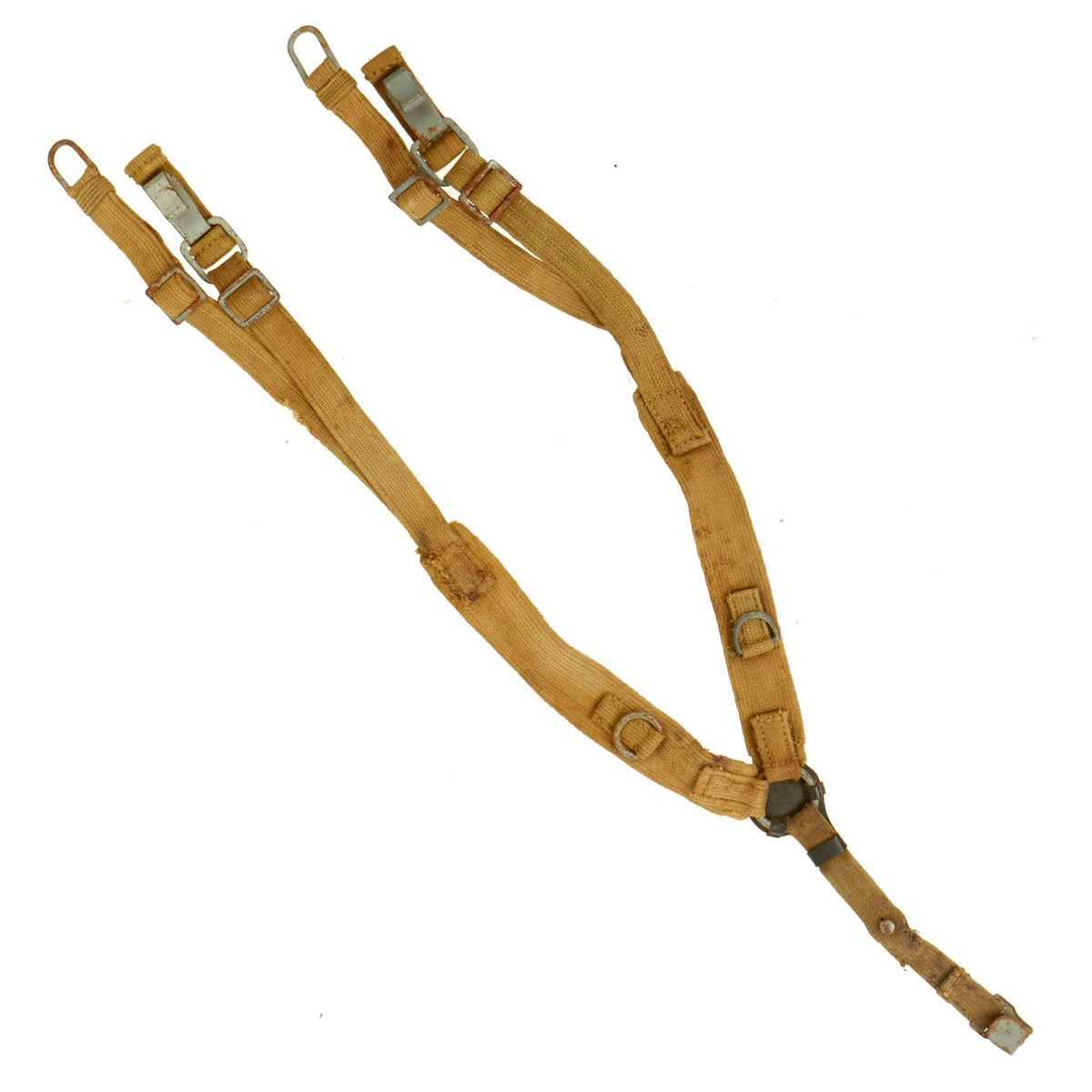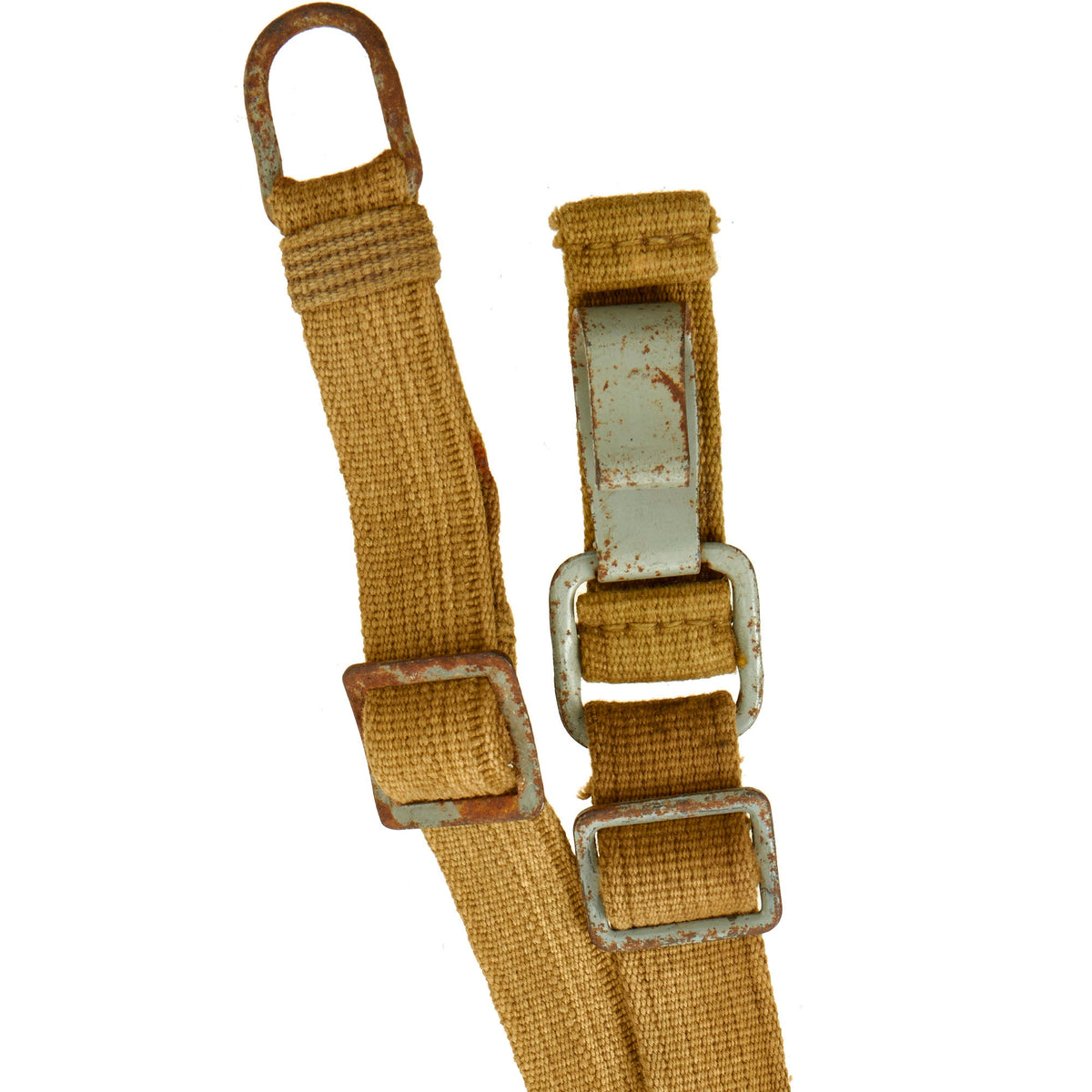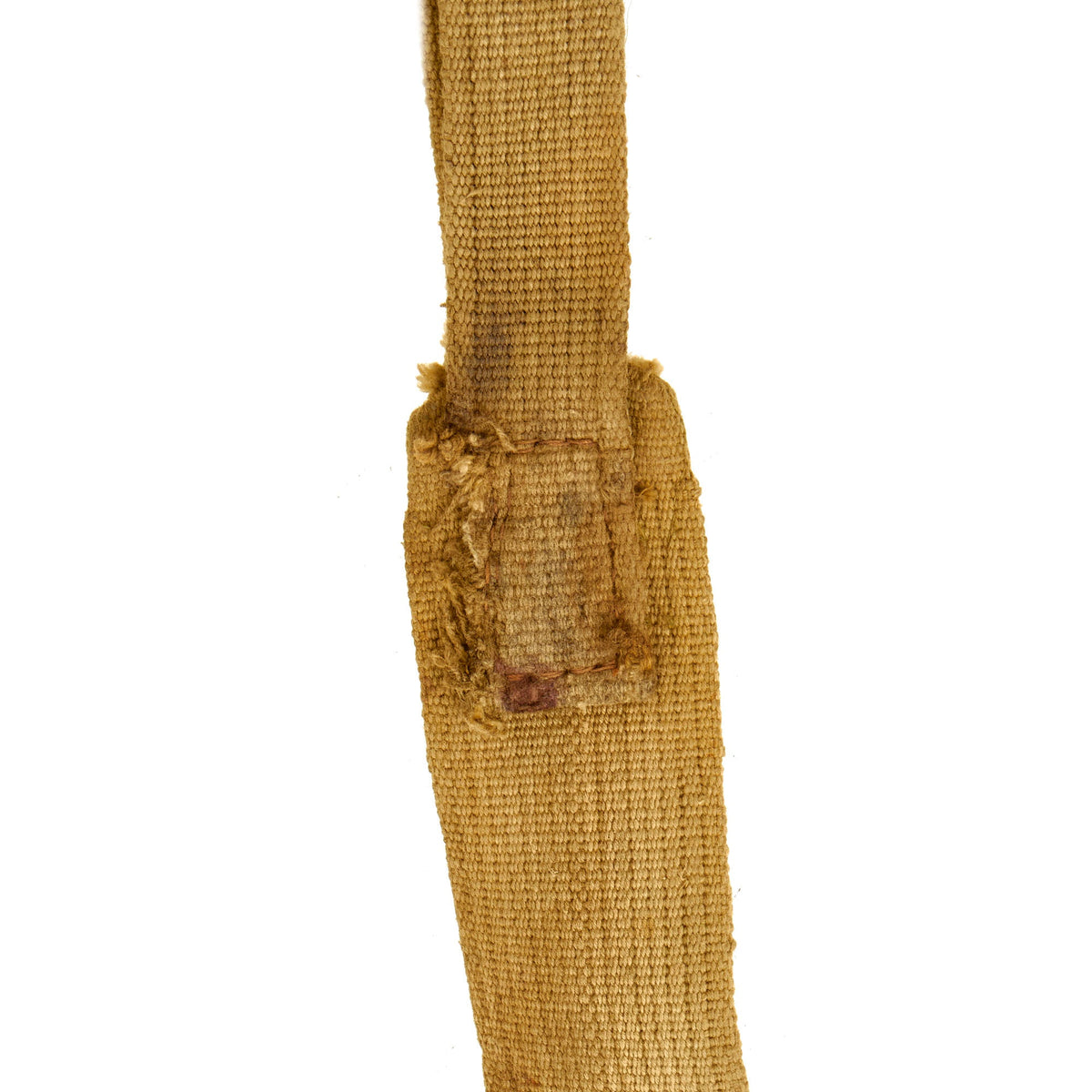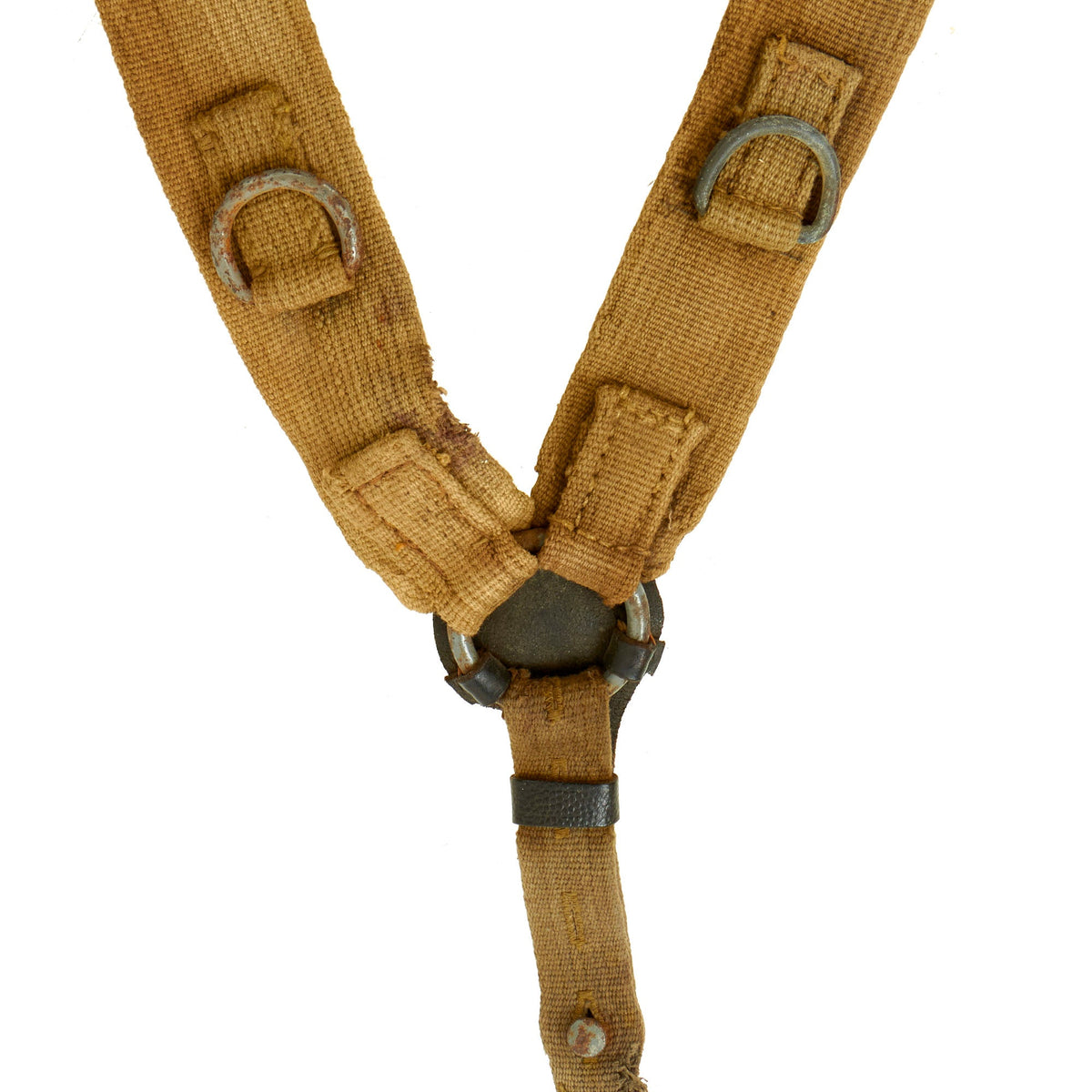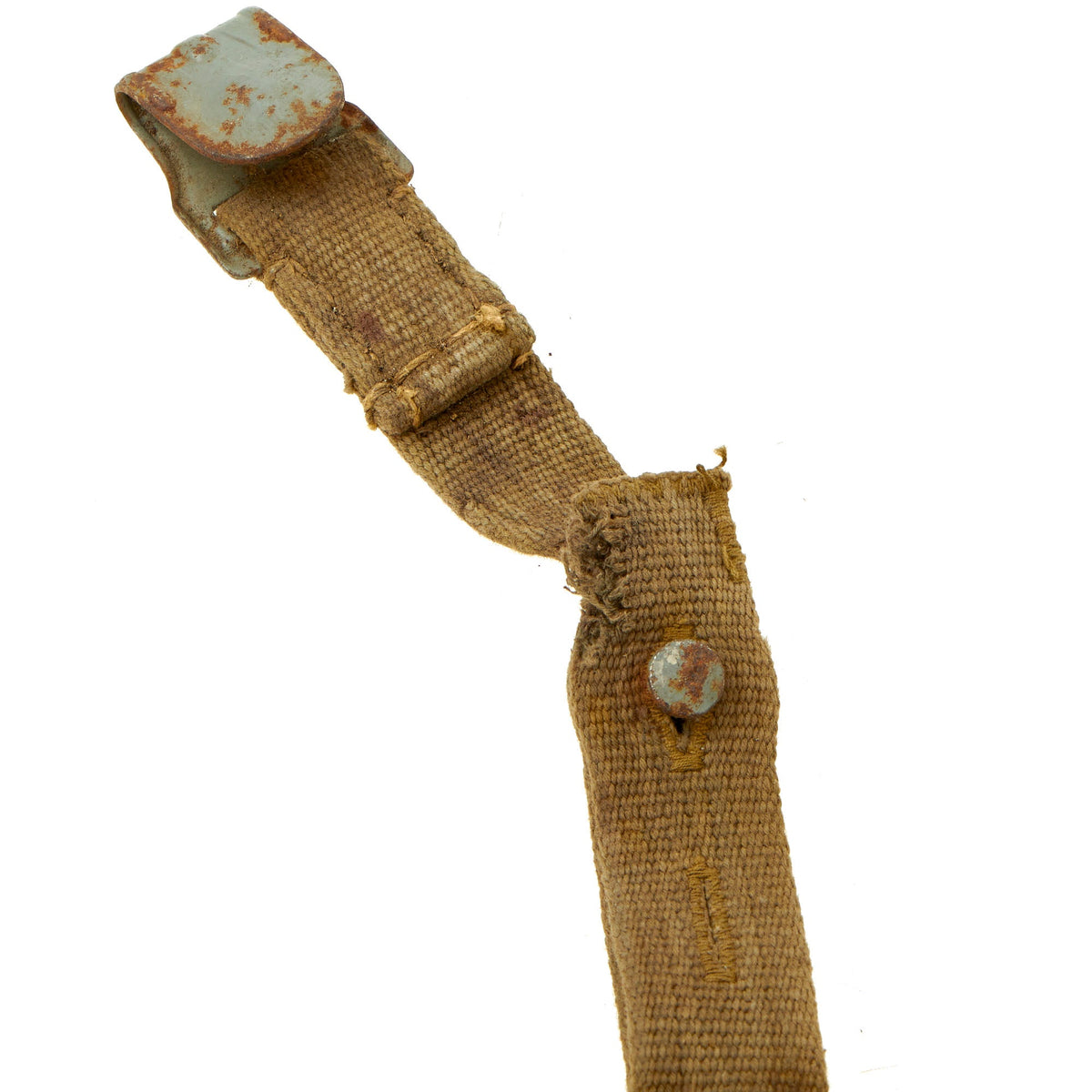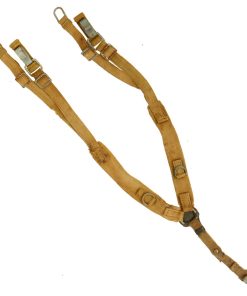Original German WWII Army DAK Tropical Combat Suspender Y Straps by Lohmann Werke A.G. Bielefeld – dated 1941 Original Items
$ 495,00 $ 148,50
Original Item: Only One Available. The combat Y-straps were developed in April 1939 along with the M39 backpack to replace the earlier M34 backpack with integral shoulder straps. The combat Y-straps were also utilized with other backpacks including the A-Frame Assault pack and were designed to assist in distributing the weight of the equipment carried on the load bearing waist belt to the shoulders. The combat Y-straps were originally issued to Infantry rifle company personnel in April 1939 followed by motorcycle personnel in June 1941 and by bicycle troops in March 1943.
Originally all of the Y-straps were produced in a blackened leather until late 1940, with the impending German entrance into the North African campaign, tropical uniforms and equipment were quickly developed and issued in time for Deutsches Afrika Korps personnel’s arrival in Tripoli in February 1941 and included canvas web construction Y-straps. Eventually, due to leather shortages the canvas web Y-straps were also issued to personnel serving in southern areas of continental Europe and other theaters of battle.
The standard German Heer (Army) loadout would have the front clips attached to 98k Triple Ammo pouches on the left and right front of the pistol belt, while the rear attaches directly to the pistol belt. Usually then an “A-Frame” would be installed, with the top clips attaching to the two D-rings on the shoulder straps on the top, with the auxiliary straps attached to the bottom clips. Then the field gear, such as the mess tin, blanket, gas mask, etc would be attached to the A-Frame.
This example of Y-straps is an early war webbing which are maker marked and dated on the adjoining leather piece:
LOHMANN-WERKE
BIELEFELD
1941
The company initially traded and exported bicycle parts and saddles in London. In 1895 a new location in Bielefeld (old steam mill) was opened to sell English imports with exclusive sales rights. After a fire, a new factory was built on Königstrasse and put into operation in 1904. Independent products were now produced and sold here. From then on, the company developed into one of the leading manufacturers of bicycle parts on the European continent. After the death of company founder Carl Lohmann in 1916, the Lohmann works were converted into a family-owned stock corporation. The number of employees rose to 1,550 by 1945, the most prominent of whom was Carl Severing (Prussian Minister of the Interior from 1928 to 1932). In addition to the headquarters in London and the factory in Bielefeld, a factory was built in Pretoria in South Africa and one in Pabianice near Łódź in Poland in the 1930s and 1940s , although these were lost after the war.
On September 30, 1944, large parts of the factory were destroyed in the air raid on Bielefeld. Afterwards, Adolf Lohmann (the founder’s eldest son) and many of his employees campaigned for reconstruction. Dismantling by the victorious powers was prevented by his close contact with the British military government .
Condition is very good, with the expected wear from age and service. There is some cracking in the finish of the leather bits and the webbing showing signs of faithful wear with staining.
This example was previously sold by The Ruptured Duck and still retains their original guarantee from Bill and Patrick Shea that serves as a “letter of authenticity”.
Comes more than ready for further research and to complete a display!
Fast Shipping with Professional Packaging
Thanks to our longstanding association with UPS FedEx DHL, and other major international carriers, we are able to provide a range of shipping options. Our warehouse staff is expertly trained and will wrap your products according to our exact and precise specifications. Prior to shipping, your goods will be thoroughly examined and securely secured. We ship to thousands clients each day across multiple countries. This shows how we're dedicated to be the largest retailer on the internet. Warehouses and distribution centres can be located throughout Europe as well as the USA.
Note: Orders with more than one item will be assigned a processing date depending on the item.
Before shipping before shipping, we'll conduct a thorough inspection of the items you have ordered. Today, the majority of orders will be delivered within 48 hours. The delivery time will be between 3-7 days.
Returns
The stock is dynamic and we cannot completely manage it because multiple stakeholders are involved, including our factory and warehouse. So the actual stock may alter at any time. It's possible that you may not receive your order once the order has been made.
Our policy is valid for a period of 30 days. If you don't receive the product within 30 days, we are not able to issue a refund or an exchange.
You can only return an item if it is unused and in the same state as the day you received it. You must have the item in its original packaging.
Related products
Uncategorized
Uncategorized
Uncategorized
Uncategorized
Uncategorized
Uncategorized
Uncategorized
Australian WWII Owen MK1 Machine Carbine SMG Custom Fabricated Replica with Sling Original Items
Uncategorized
Uncategorized
Uncategorized
Uncategorized
Uncategorized
Uncategorized
Angolan Rebel 1970s era 60mm Inert Display Mortar from Angolan Civil War Original Items
Uncategorized
Uncategorized
Uncategorized
Band of Brothers ORIGINAL GERMAN WWII Le. F.H. 18 10.5cm ARTILLERY PIECE Original Items
Uncategorized
Uncategorized
Uncategorized
Uncategorized
